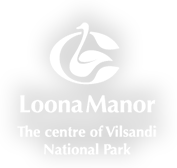Events in the manor
The 500-year-old walls of the manor provide a setting for piano music, as well as art inspired by local nature. There is an exhibition sale of watercolours by Siiri Talli and pencil drawings by Kaspar Talli in all three halls of the manor all year round. Porcelain figurines painted by Siiri Talli can be bought as souvenirs.
Every year, pianists from far and wide are attracted by our magnificent Estonia piano. We have offered concerts for various tastes within the framework of several events, and some of them have become a tradition. Every August we host young violinists who perform at the final concerts of the masterclass by Mari Tampere-Bezrodny.
